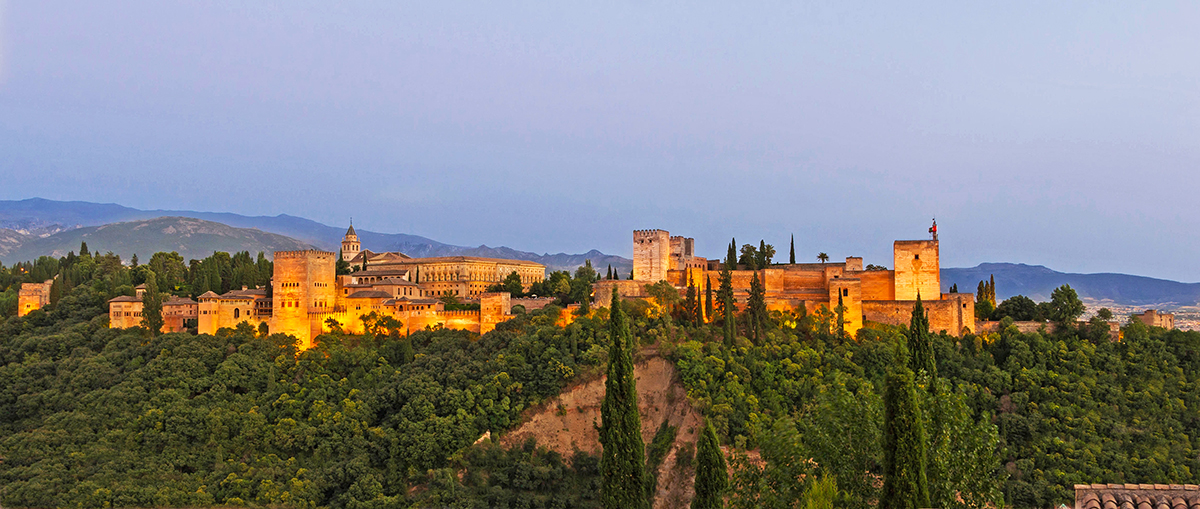I bet you’ve visited a place and thought, “I really want to come back here again someday.” And sometimes you make good on the promise and sometimes you don’t. I’ve definitely made it back to some of those places. But others have eluded me. One such destination is Granada, Spain.
It was my first trip out of the country and I was going to Andalusia (Andalucia), the southern region of Spain. The Costa del Sol, Seville (Sevilla), Granada — all firmly on my list. And while seeing the Mediterranean for the first time was at the top of my list, second on that list was Granada and the beautiful palace and citadel of the Alhambra.
But on that short 2 night stay in Granada, I found out there was much more to this intriguing city. And as I left, I thought, “I really want to come back here again someday.” I was longing to explore it more, camera in hand.
And let’s face it — I was a novice international traveler at that time. This was my first trip to Europe. I know things now that I didn’t know then AND I’m a more confident international traveler.
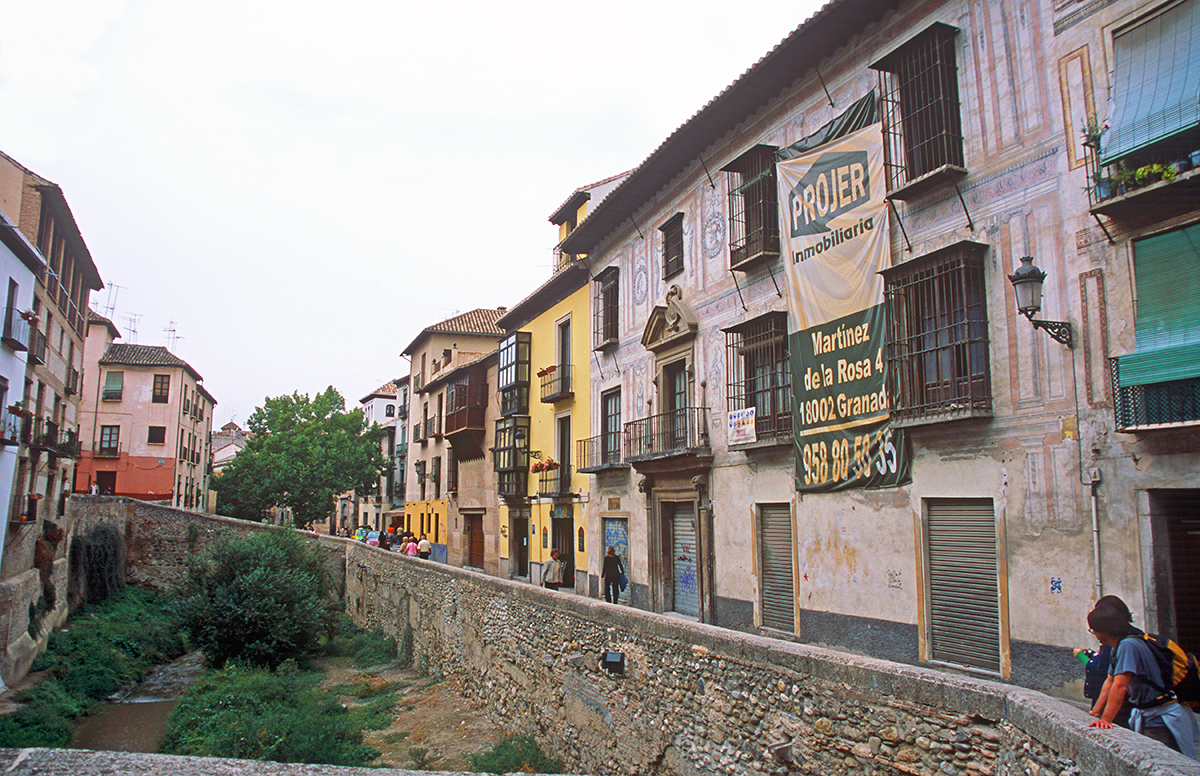
Paseo de los Tristes near the Alhambra and Albayzín, Granada ©Lynne P Nieman
There are many reasons why I would go back to Granada and why I think you should put it on your list. Really. It’s a fabulous destination filled with a rich history, streets made for wandering and incredible sites. Add in some tasty food and a gorgeous location up in the foothills of the Sierra Nevada mountains and you just can’t go wrong with this city of 250,000.
Let’s take a closer look at this city with its fascinating history.
The Alhambra and Generalife
Yes, I’ve seen this incredible Moorish palace and citadel and the gorgeous gardens of the Generalife that lie next to it. But I’d go back to see it again. I know I missed things. I probably didn’t spend enough time there. It was raining. And it was dark when I first set out as it was late October before the time change. Mornings came late. I would love to see it again and really take my time there.
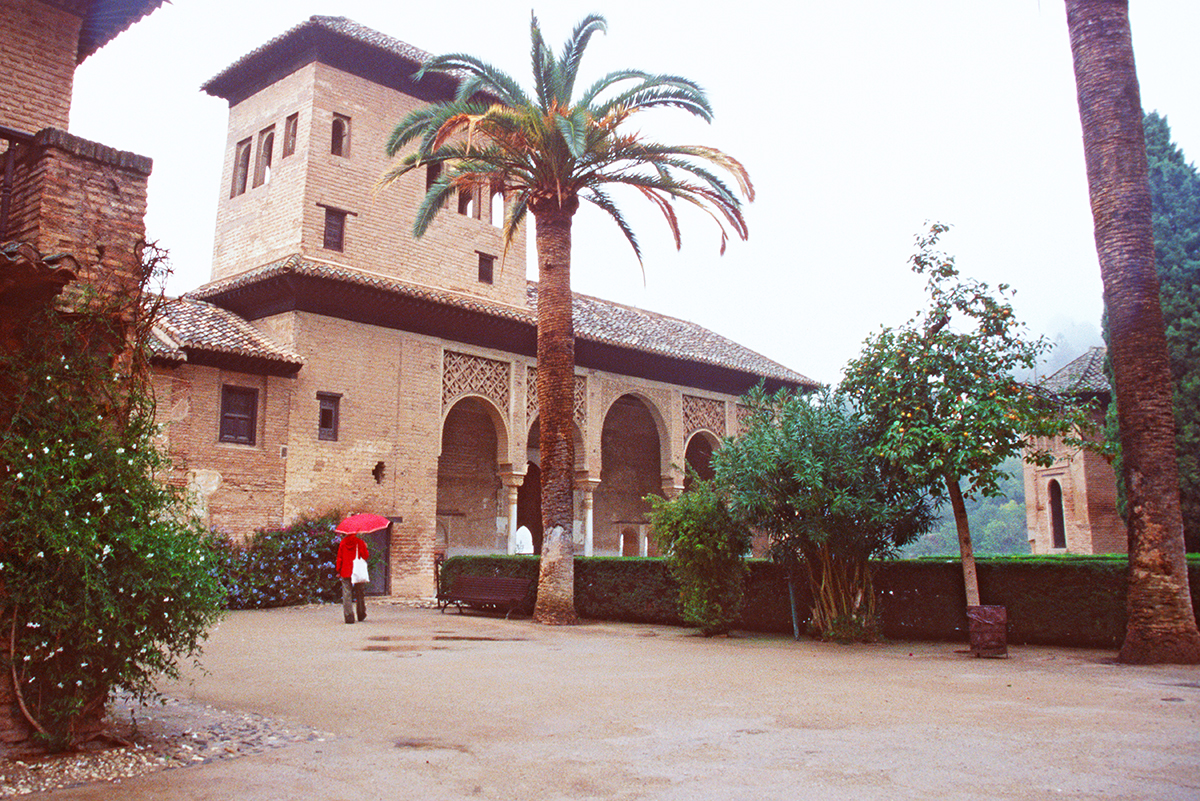
Alhambra in the rain, Granada ©Lynne P Nieman
So what is the Alhambra?
It’s a palace and fortress that was originally built in the late 800’s first as a fortress. It was small and overlooked. It was probably built on the ruins of some Roman fort.
Then in the mid-13th century the Moorish emir rebuilt it. Remember that this was the time when parts of Spain were under the rule of the Moors. These were Muslim people who lived in parts of northern Africa and parts of southern Europe such as Sicily, Malta and the Iberian peninsula (Spain and Portugal).
Anyway, Mohammed ben Al-Ahmar, the emir at that time, built the Alhambra, expanding it. But it was Yusuf I, Sultan of Granada, that turned it into a royal palace in 1333 and created much of what you see today. And let me tell you, it is stunning!
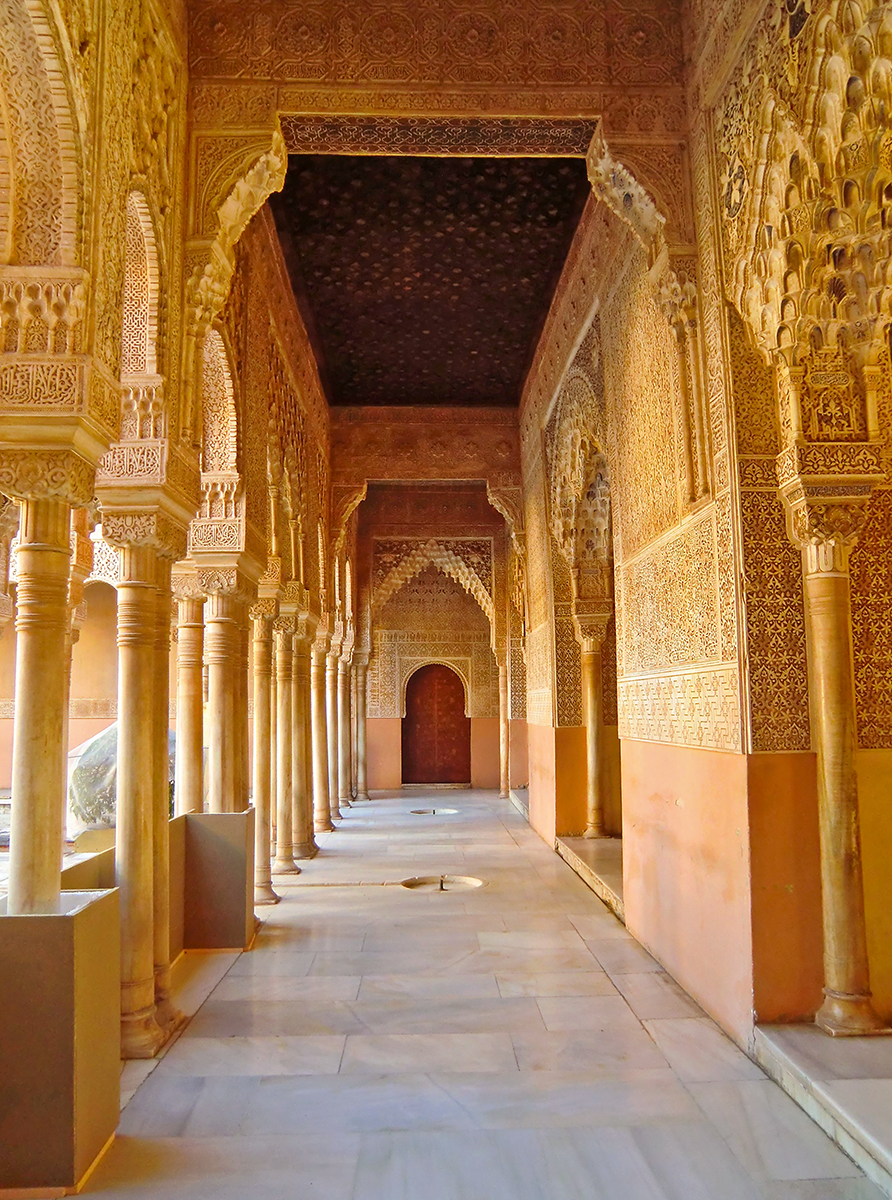
One of the hallways at the Alhambra in Granada
What I personally love about the Moorish style is its simplicity — geometric shapes and vibrant colors in repetition creating beautiful patterns. There are no paintings of people or landscapes like what you see in other parts of Europe. I’m a fan of this style. There’s beauty in simplicity.
Even though the Alhambra became a royal court to Ferdinand and Isabella when the Moors were conquered and Christianity once again ruled, and it did get a slight makeover with some more “western” style and additions, thankfully, the Alhambra never got completely remodeled.
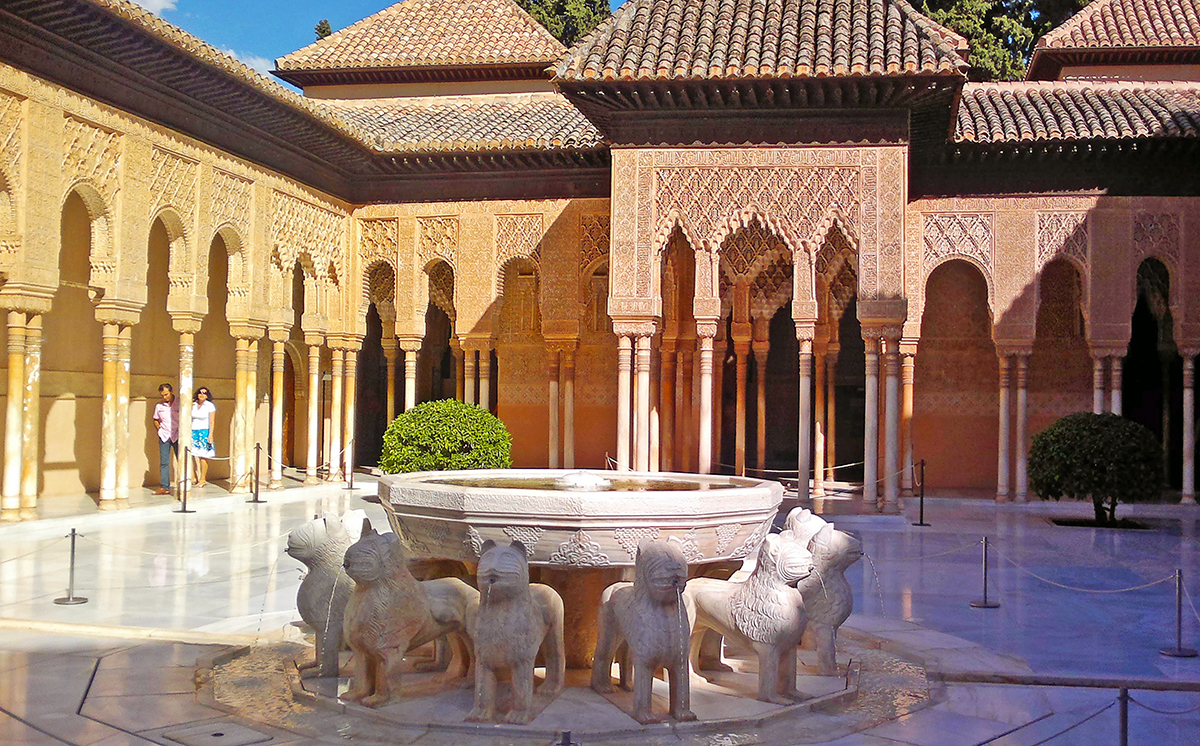
Court of the Lions, Alhambra, Granada
After centuries of neglect, the Alhambra was rediscovered after the fall of Napoleon by British intellectuals and then travelers coming from other northern European countries. It was spruced up and it became a UNESCO World Heritage site in 1984.
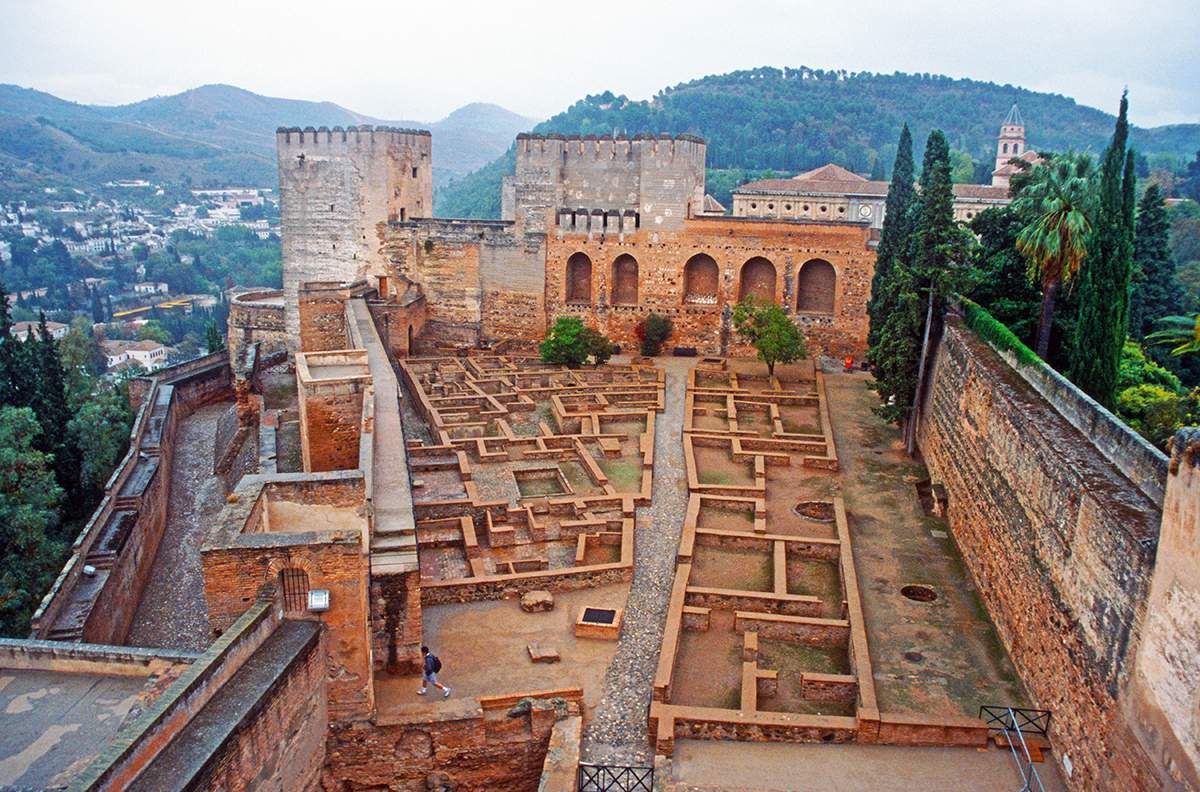
The Alcazaba (military fortress) of the Alhambra, Granada ©Lynne P Nieman
From the Alcazaba (the military part of the palace) to the Patio of the Lions to the Hall of the Abencerrajes to the Court of the Myrtles, this is truly a treasure of incredible architecture and beauty. The carvings in the walls, the gorgeous ceilings, the central courtyards — even though it’s been a while I can picture certain aspects of the Alhambra and it makes me long to return. I have to admit, it leaves me a bit speechless. And that rarely happens!
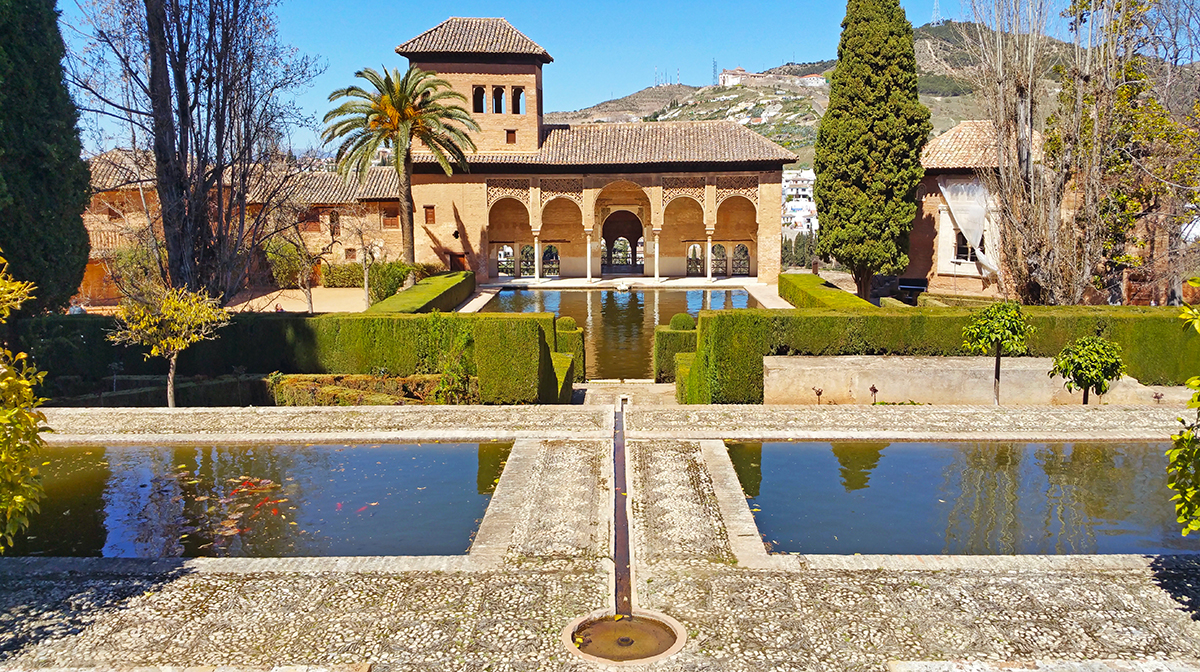
Buildings and pool of the Alhambra, Granada
The Generalife
One of my favorite parts of the Alhambra is the Generalife. These are the gardens and some outlying buildings. One of the wonderful gifts the Moors (and many of those in the Arab and Muslim world) gave to all of us is their love of pools of water and fountains in these gardens. This was a place for the sultans and kings to escape and be at peace. For them to meditate.
Even in October, when I visited, it was still green and colorful with flowers. I can only imagine how gorgeous it is in spring.
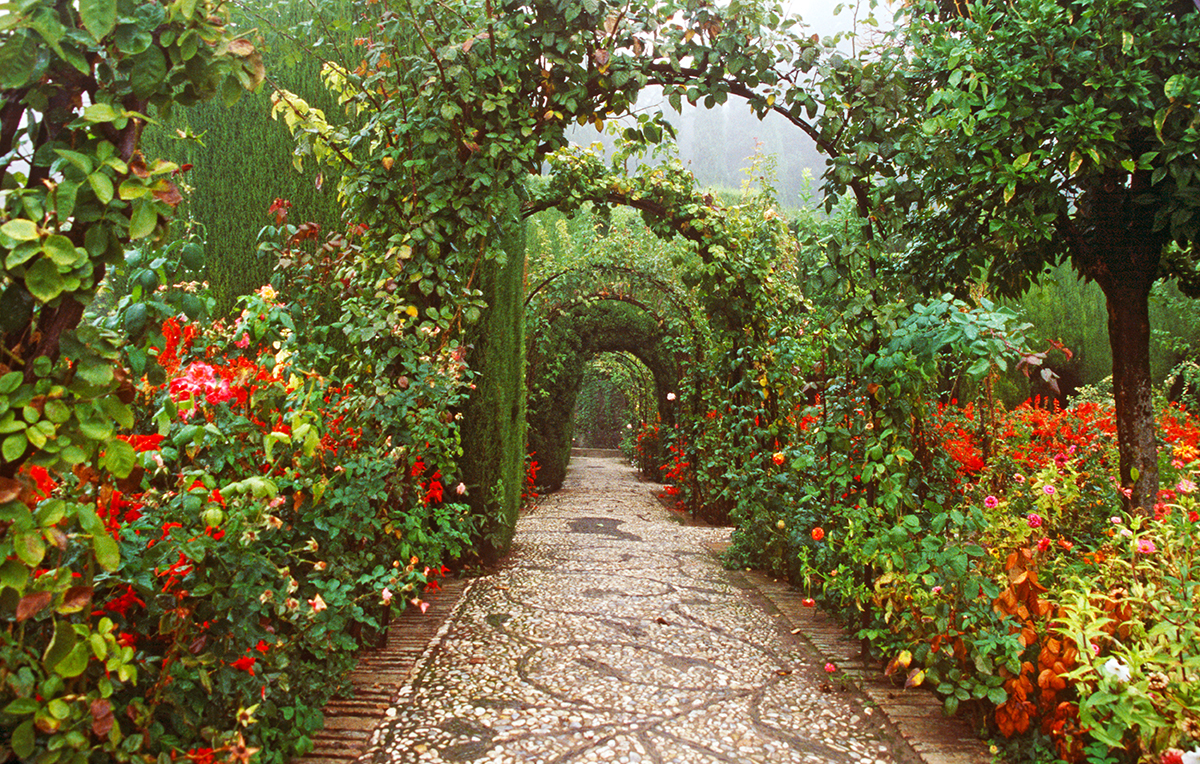
Generalife (Architect’s Garden) at the Alhambra, Andalusia, Spain ©Lynne P Nieman
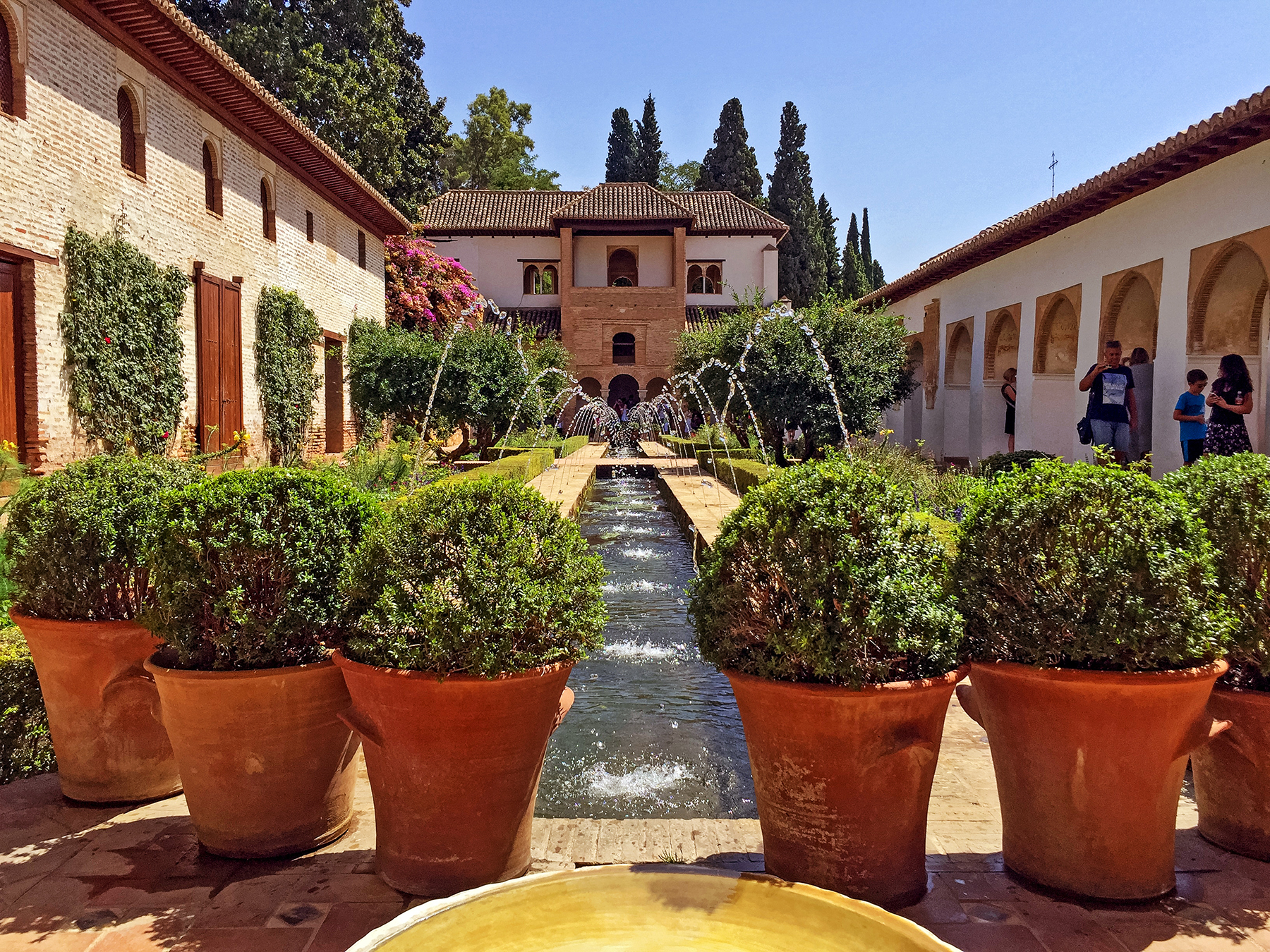
Generalife pool, fountains, and buildings, Alhambra, Granada
The Albaicín
El Albayzín (in Spanish) is another of the UNESCO World Heritage sites in Granada. This is the neighborhood very close to the Alhambra. It’s a maze of narrow, winding streets that are so common in places like Fez, Morocco. It’s one of the oldest centers of Muslim culture in Granada.
Now, I have to admit, I think I just wandered on the outskirts of this neighborhood a bit. Another reason for me to travel back to Granada! There’s a lot to see here in this beautiful neighborhood.
While most of the mosques no longer exist as the churches were built over them, you will see a few remnants of Moorish times in the city gates, some of the walls and some of the church bell towers that were minarets of the mosques. The courtyard of the once Great Mosque of the Albaicín is still intact and is attached to the Church of El Salvador. So there are pieces of the Moors still there if you know where to look.
The layout of the narrow streets that wend their way through the buildings is the lasting characteristic that the Moors left behind. It’s a wonderful place to lose yourself and simply take in the sights, smells and sounds of Granada. And maybe let your imagination go to picture what it was like centuries ago.
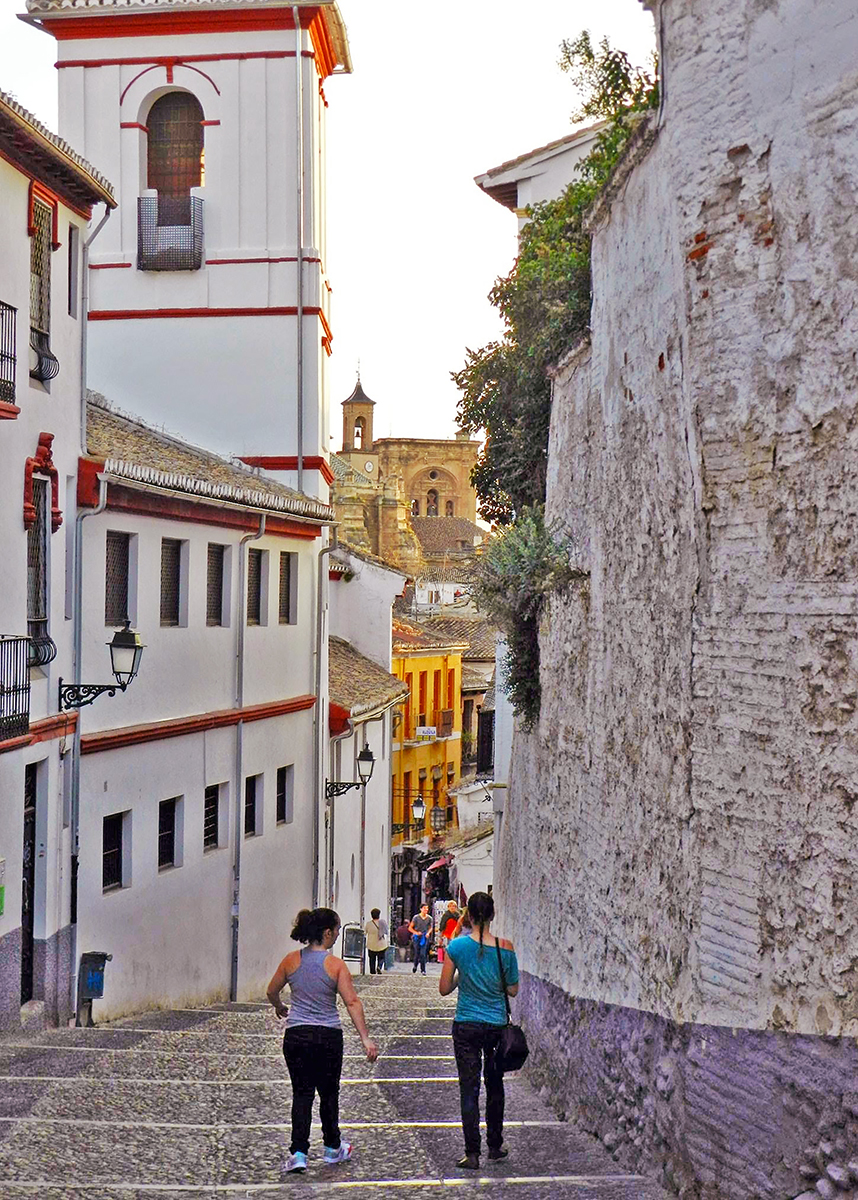
Streets of the Albayzín, Granada
Cathedral of Granada
Another of those churches that was built over a mosque, the Cathedral of Granada sits where the Nasrid Great Mosque of Granada once stood in the center of the city.
Also known as the Cathedral of the Incarnation, it was begun in the early 1500’s and took 181 years to finish. That’s a long time. But it’s a beauty with mostly Spanish Renaissance styles. However the façade is made in the Baroque style.
It has 5 naves of varying heights with the central one being the largest. This main chapel contains effigies of Ferdinand and Isabella kneeling in prayer. And there are some stunning columns leading up to gorgeous ceilings and stained glass windows.
One more reason for me to return and for you go to Granada!
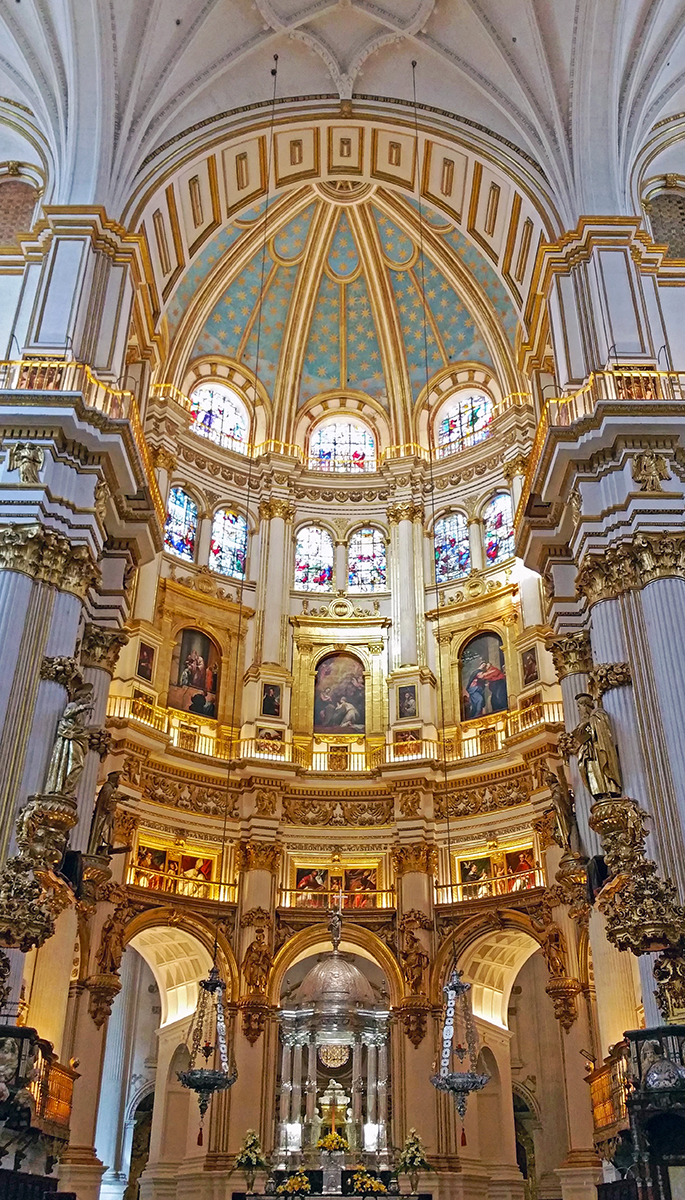
The gorgeous interior of the Granada Cathedral
Alcaicería
Now I know I wandered through this spot which is home of the Great Bazaar of Granada. It’s a bit touristy and not quite as authentic as it once was. It was once filled with stalls selling exotic Arabic spices and silks. Now it’s a little less grand, but still a wonderful street to meander through as there is loads of Arabic culture and history.
There are still interesting items to buy if you’re a shopper. Some of the items are authentic, such as fajalauza — local, traditional painted ceramics — and grenadine farolas — stained-glass lamps. And you’ll definitely find the exotic spices. But you’ll also find knick knack-y souvenirs.
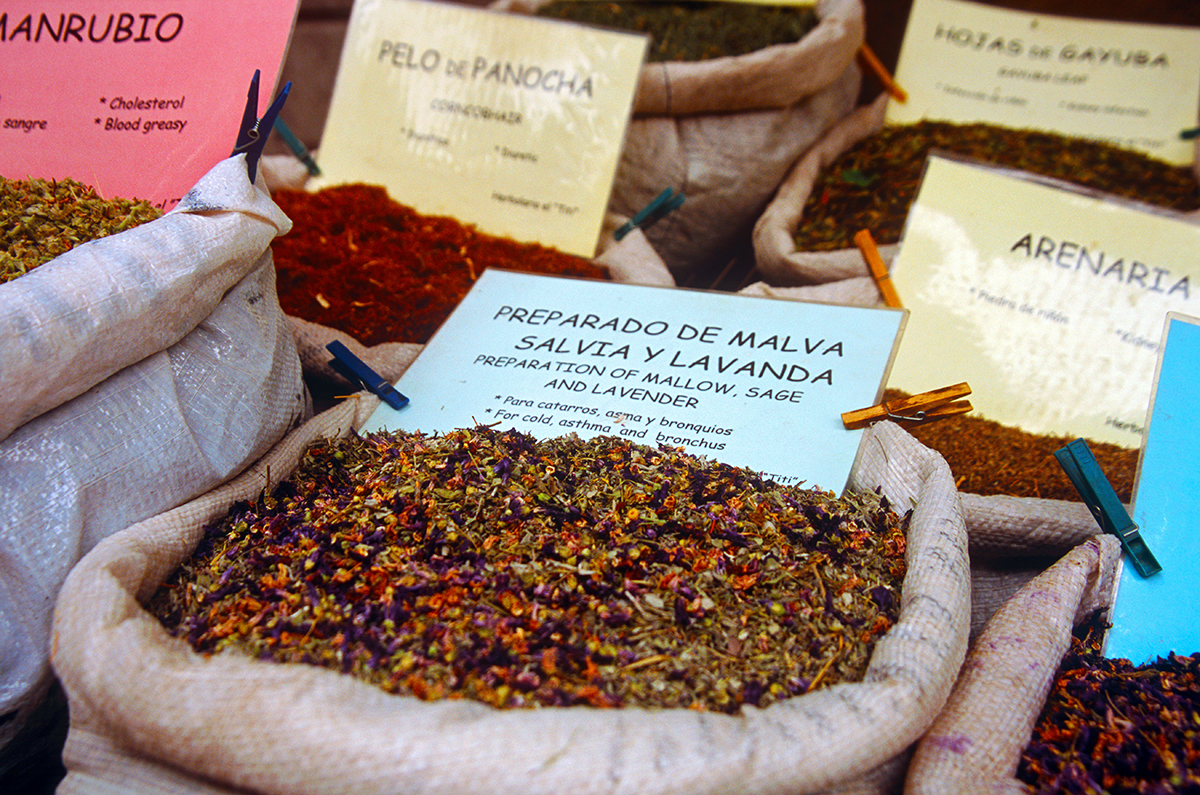
Fresh herbs at market, Granada ©Lynne P Nieman
I remember seeing the gorgeous ceramics and the stained-glass lamps and the taracea which are items made with wooden inlay such as jewelry boxes. Really beautiful.
Anyway, the Alcaicería is a fun spot to spend a few hours.
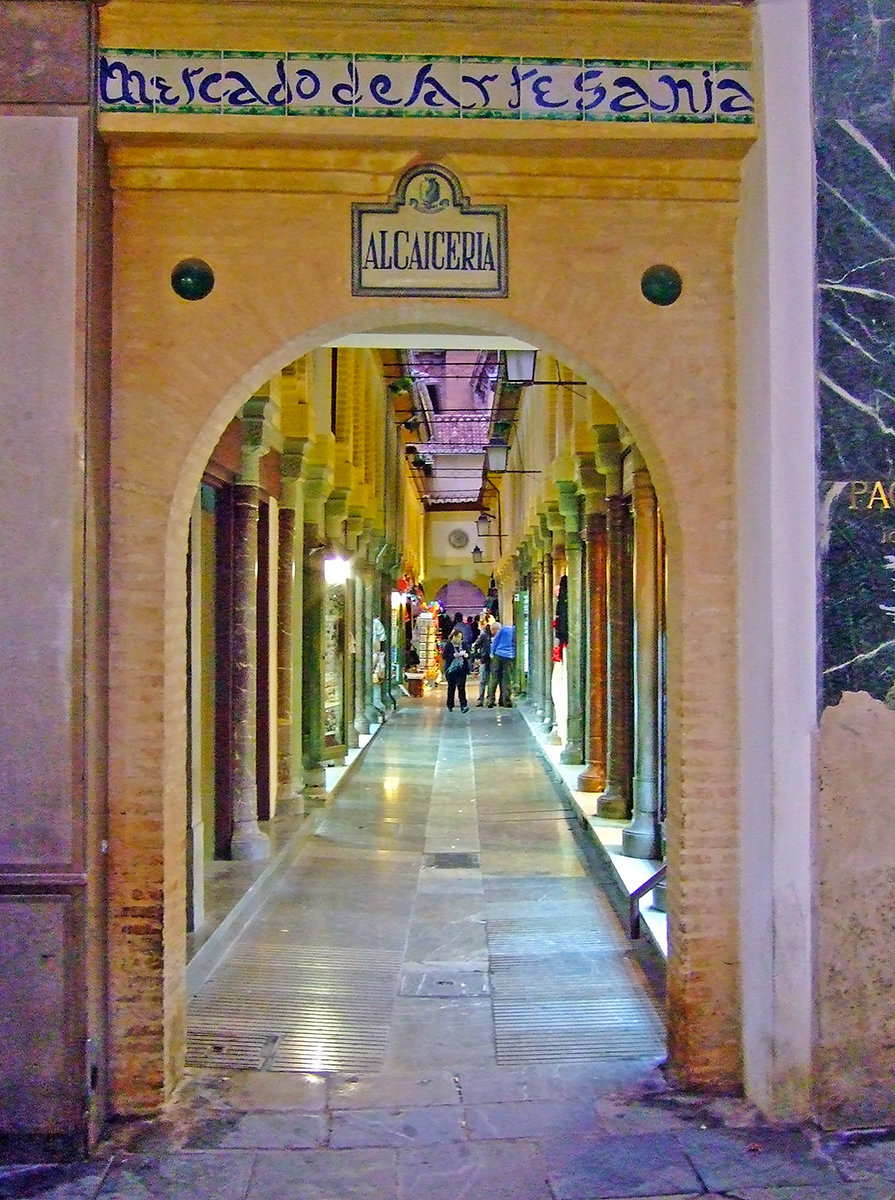
Alcaiceria market in Granada
Royal Chapel
The Capilla Real (in Spanish) is next to the Cathedral and is a Gothic style mausoleum. This is where Ferdinand and Isabella are buried. They chose Granada as their final resting place, and as such, the Capilla Real was built.
Here you’ll also find some of the monarchs’ artifacts such as Ferdinand’s sword and Isabella’s sceptre and silver crown. Their personal art collection is also in the Royal Chapel.
These are the monarchs that set Christopher Columbus on his explorations and the king and queen who kicked out the Jews and Muslims from Spain. So, like many royals, they have good points and bad ones.
Regardless, the Royal Chapel is definitely worthy of some time and yet another reason I’d love to go back to Granada.
Sacromonte
Another of Granada’s neighborhoods, Sacromonte is located just a bit to the east of the Alhambra and on Valparaíso hill. Back in the early 1960’s it was a slum, but now is a hip place to be.
This is an area where cave houses were (and still are) common and where gypsies once lived. Nowadays the area is now home to artists and the cave houses now are chic with modern facilities.
What the neighborhood retains is that sense of free spiritedness. It’s a wonderful area to wander about to see what the locals are creating. There’s art, music and dance — not to mention some beautiful sites such as the Abbey of Sacromonte, the Iglesia de San Gil y Santa Ana and the Museum Caves of Sacromonte.
Yes, one more reason for you to visit Granada (and for me to go back — I definitely did not wander about here!)
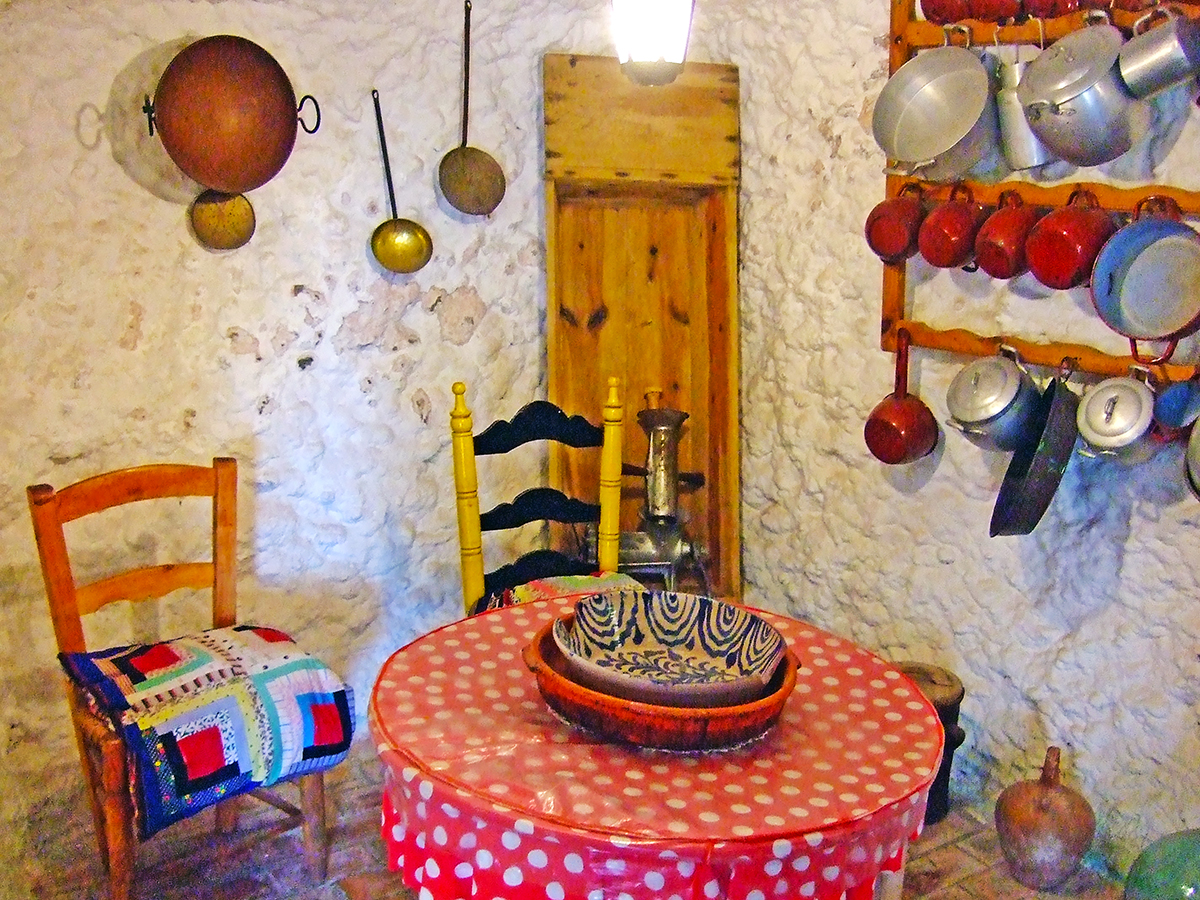
Cave house in Sacromonte, Granada
So who’s ready to go to Granada?
I’ll be honest with you. As I wrote this post, I reminisced. I brought out my images (I was still shooting film so I have pages of slides) and looked through them. *Sigh*
Granada really is a fascinating city. There’s something rather exotic about it. Enchanting. Mysterious. It’s at once here in the present, yet rooted in the past. It’s traditional and conservative, but feels artsy, hippy, bohemian. So, it’s a bit of a contradiction at times.
Mostly it’s simply alluring. The Alhambra will always be the star, but the rest of the city will entice. And the next thing you know — you’ll find yourself falling in love.
All photos courtesy of Pixaby unless otherwise noted.

